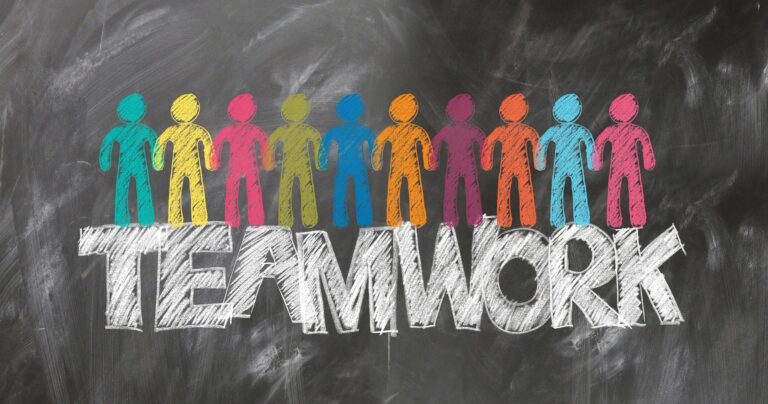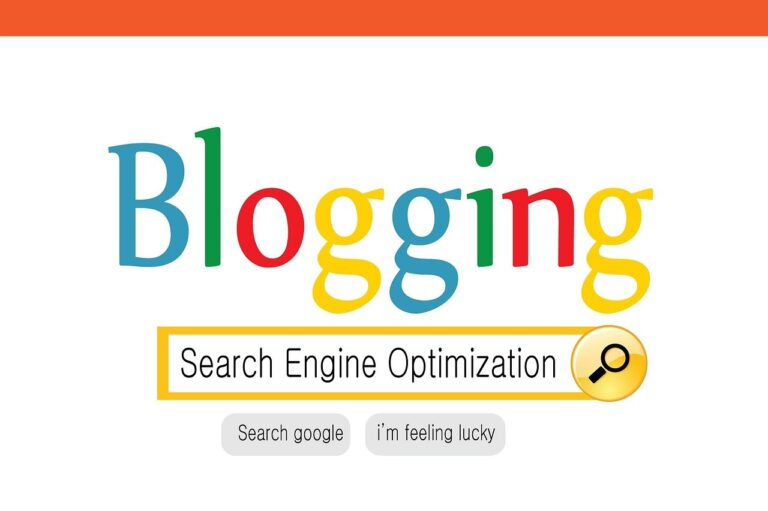Active listening is a cornerstone of effective client communication. It goes beyond simply hearing words, involving fully engaging with and understanding the speaker’s message.
By mastering active listening techniques, you can significantly enhance your ability to connect with clients, build trust, and provide better support.

Effective active listening requires practice and dedication. It involves focusing your attention, maintaining eye contact, and using non-verbal cues to show engagement.
You’ll need to set aside distractions and truly concentrate on what your client is saying, both verbally and non-verbally. This level of attentiveness allows you to pick up on subtle nuances and emotions that might otherwise go unnoticed.
Incorporating active listening into your client interactions can lead to more productive sessions and improved outcomes. You’ll find that clients feel more heard and understood, which can foster a stronger therapeutic alliance.
By developing your active listening skills, you’ll be better equipped to offer empathetic and tailored support to each individual you work with.
Key Takeaways
- Active listening enhances client communication by fostering understanding and trust
- Practicing focused attention and non-verbal engagement improves your listening skills
- Mastering active listening techniques leads to more productive client interactions and better outcomes
Understanding Active Listening
Active listening is a powerful communication skill that goes beyond simply hearing words. It involves fully engaging with the speaker, comprehending their message, and responding thoughtfully. You can use active listening to improve relationships, resolve conflicts, and enhance your professional effectiveness.
The Definition and Importance of Active Listening
Active listening is the practice of fully concentrating on, understanding, and responding to a speaker. It requires you to be present in the moment and give your undivided attention to the person speaking.
Active listening is crucial because it:
- Builds trust and rapport
- Reduces misunderstandings
- Encourages open communication
- Shows respect and empathy
By actively listening, you create an environment where others feel heard and valued. This leads to more productive conversations and stronger relationships in both personal and professional settings.
The Difference Between Hearing and Listening
Hearing is a passive, physical process of perceiving sound. Listening, on the other hand, is an active mental process that involves interpreting and understanding the meaning behind those sounds.
When you listen actively, you:
- Focus on the speaker’s words and body language
- Process the information being shared
- Seek to understand the speaker’s perspective
- Withhold judgment and avoid interrupting
Active listening requires mastering many skills, including reading body language, maintaining attention, and controlling your emotional responses. By developing these skills, you can become a more effective communicator.
The Role of Active Listening in Professional Settings
In professional environments, active listening is a valuable tool for:
- Improving client relationships
- Enhancing team collaboration
- Resolving workplace conflicts
- Providing effective feedback
Active listening builds and maintains therapeutic alliances in counseling settings. It shows empathy and creates opportunities for healing and growth. By reflecting back the emotions you hear, you can provide support and encouragement to clients.
In business settings, active listening helps you understand client needs, negotiate effectively, and make informed decisions. It also fosters a positive work culture by promoting open communication and mutual respect.
The Benefits of Active Listening for Holistic Practitioners
Active listening offers holistic practitioners numerous advantages in their practice. It enhances client interactions, builds trust, and improves treatment efficacy.
Building Stronger Client Relationships
Active listening helps you establish deeper connections with your clients. By giving them your full attention, you demonstrate respect and value for their experiences.
You create a safe space for clients to express themselves openly. This encourages them to share more detailed information about their health concerns and life circumstances.
Your attentiveness allows you to pick up on subtle cues and non-verbal communication. These insights can provide valuable context for understanding your clients’ needs more comprehensively.
Regular practice of active listening skills strengthens your rapport with clients over time. This can lead to increased client retention and positive word-of-mouth referrals for your practice.
Fostering Trust and Empathy
When you employ active listening techniques, you build a therapeutic alliance with your clients. This foundation of trust is crucial for effective holistic care.
By truly hearing your clients, you validate their experiences and emotions. This validation can be highly therapeutic, especially for those dealing with chronic conditions or emotional distress.
Active listening allows you to respond with genuine empathy. You can better understand your clients’ perspectives and offer support that resonates with their unique situations.
Your empathetic responses help clients feel understood and accepted. This emotional connection can significantly enhance their overall healing experience.
Improving Treatment Outcomes
Active listening directly contributes to better treatment outcomes in holistic practice. By gathering comprehensive information, you can develop more effective treatment plans.
You gain a clearer understanding of your clients’ health goals and preferences. This knowledge allows you to tailor your treatments to align with their individual needs and values.
Active listening helps you identify potential obstacles to treatment adherence. By addressing these concerns proactively, you can improve client compliance and treatment effectiveness.
Your attentiveness enables you to track subtle changes in your clients’ conditions over time. This awareness allows for timely adjustments to treatment plans, optimizing results.
Techniques to Improve Active Listening Skills
Active listening is a skill that can be developed and refined through practice. By mastering specific techniques, you can enhance your ability to truly hear and understand your clients.
Maintaining Eye Contact and Body Language
To show you’re fully engaged, maintain appropriate eye contact with your client. This demonstrates attentiveness and builds trust. Your body language should be open and receptive.
Lean slightly forward to indicate interest. Nod occasionally to show understanding, but avoid excessive head bobbing, which can seem insincere.
Keep your arms uncrossed and hands visible. This conveys openness and encourages the client to share more freely.
Mirroring your client’s posture and expressions can help establish rapport, but be subtle to avoid appearing like you’re mimicking them.
Reflective Listening and Paraphrasing
Reflective listening involves restating what your client has said in your own words. This technique ensures you’ve understood correctly and shows the client you’re paying attention.
Use phrases like “It sounds like you’re saying…” or “If I understand correctly…” to introduce your paraphrase.
Focus on capturing both the content and the emotion behind your client’s words. For example: “You seem frustrated by the lack of progress in your project.”
Paraphrasing gives your client a chance to clarify if you’ve misunderstood anything. It also encourages them to elaborate further on their thoughts and feelings.
Asking Open-Ended Questions
Open-ended questions encourage clients to provide more detailed responses. They typically begin with words like “how,” “what,” or “why.”
For example, instead of asking “Did you enjoy the meeting?” try “What were your thoughts on the meeting?”
These questions allow clients to express themselves more fully and often reveal information you might not have thought to ask about directly.
Be mindful of your tone when asking questions. Aim for a curious, non-judgmental approach to encourage open communication.
Avoiding Interruptions and Giving Full Attention
Resist the urge to interrupt, even if you think you know what the client is going to say. Allow them to complete their thoughts without interjection.
Put away distractions like your phone or computer. Give your client your undivided attention to show respect for their time and thoughts.
If you need to take notes, explain this to your client beforehand. Use brief notations to minimize disruption to the conversation flow.
Practice patience. Some clients may take longer to articulate their thoughts. Give them the time and space they need to express themselves fully.
Using Silence Effectively
Silence can be a powerful tool in active listening. It gives your client time to think and encourages them to share more deeply.
After your client finishes speaking, wait a few seconds before responding. This pause allows them to add any additional thoughts they may have.
If your client becomes silent, resist the urge to immediately fill the void. Count to five silently before speaking, giving them a chance to continue.
Use nonverbal cues like nodding or maintaining eye contact during silences to show you’re still engaged and waiting for more information.
Overcoming Common Barriers to Effective Listening

Effective listening requires recognizing and addressing common obstacles that can impede clear communication. By developing strategies to overcome these barriers, you can significantly enhance your ability to understand and respond to clients.
Identifying and Addressing Personal Biases
Personal biases can color how you perceive and interpret messages. To overcome this barrier, start by acknowledging your own biases. Reflect on your preconceptions and how they might affect your interpretation of client information.
Practice self-awareness during conversations. When you notice a bias surfacing, consciously set it aside. Focus on the client’s words and intentions rather than your assumptions.
Seek diverse perspectives to challenge your biases. Engage with people from different backgrounds and listen to their experiences. This can broaden your understanding and help you approach client interactions with a more open mind.
Consider using structured listening techniques, such as repeating back what you’ve heard, to ensure you’re capturing the client’s message accurately.
Managing Distractions and Maintaining Focus
To minimize distractions, create an environment conducive to active listening. Choose a quiet space for client meetings when possible. If working remotely, use noise-canceling headphones to block out background noise.
Put away your phone and close unnecessary computer tabs. Give your full attention to the client. If you’re expecting an important call or message, inform the client beforehand to manage expectations.
Practice mindfulness techniques to improve your concentration. Take deep breaths and mentally prepare yourself before each client interaction. If your mind wanders, gently bring your focus back to the conversation.
Use note-taking strategically. Jot down key points to help you stay engaged, but don’t let it distract you from the flow of conversation.
Handling Emotional Reactions
Strong emotions can interfere with effective listening. When faced with challenging or emotionally charged situations, maintain your composure. Take a moment to breathe and center yourself if needed.
Acknowledge the client’s emotions without getting caught up in them. Use empathetic phrases like “I understand this is frustrating for you” to show you’re listening and validating their feelings.
Practice emotional intelligence by recognizing your own emotional triggers. Develop strategies to manage your reactions, such as mental reframing or taking brief pauses when necessary.
If you find yourself becoming defensive or reactive, consciously shift your mindset to one of curiosity. Ask questions to better understand the client’s perspective rather than immediately responding.
Dealing with Overload and Information Fatigue
Information overload can lead to reduced listening effectiveness. To combat this, break down complex information into manageable chunks. Ask clients to pause if you need time to process what they’ve shared.
Use clarifying questions to ensure you’ve understood key points before moving on. This helps prevent confusion and reduces the mental strain of trying to remember too much at once.
Develop a system for organizing information during conversations. This could include using a structured note-taking method or creating visual aids like mind maps to help you process and retain important details.
Take regular breaks between client meetings to reset your mental state. Use this time to review and consolidate information from previous interactions before moving on to the next.
If you’re dealing with a particularly complex topic, consider scheduling follow-up sessions. This allows both you and the client time to reflect and prevents information fatigue during extended discussions.
Practical Applications in Professional Settings

Active listening techniques can be applied in various professional contexts to enhance client communication and improve outcomes. These methods are adaptable and can be tailored to specific industries and roles.
Case Studies and Real-Life Examples
In therapy sessions, active listening has proven highly effective. A therapist utilized reflective listening techniques to help a client with anxiety. By paraphrasing and summarizing the client’s concerns, the therapist demonstrated understanding and built trust.
In sales, a representative employed active listening to identify a customer’s needs. The rep asked clarifying questions and provided space for the customer to speak. As a result, they uncovered hidden pain points and offered a tailored solution.
A human resources manager used active listening during a conflict resolution meeting. The manager maintained eye contact and used non-verbal cues to show attentiveness. This created a safe space for employees to express their concerns.
Role-Playing and Simulation Exercises
You can improve your active listening skills through role-playing exercises. Set up scenarios mimicking real client interactions in your field.
Practice with a colleague, taking turns as the listener and speaker. Focus on maintaining eye contact, nodding, and using verbal affirmations to show engagement.
Use recorded simulations to analyze your performance. Pay attention to your body language, tone of voice, and the quality of your follow-up questions.
Incorporate challenging situations, such as dealing with angry clients or complex technical discussions. This prepares you for a wide range of real-world scenarios.
Feedback and Continuous Improvement
Seek regular feedback on your active listening skills from colleagues and clients. You can use surveys or informal conversations to gather insights.
Record your client interactions (with permission) and review them critically. Identify areas where you could have listened more effectively or asked better follow-up questions.
Set specific goals for improvement, such as reducing interruptions or increasing the use of clarifying questions. Then, track your progress over time.
Participate in communication skills workshops or seek mentorship from experienced professionals in your field. Their guidance can help you refine your active listening techniques.
Stay updated on new research and best practices in active listening. Regularly incorporate new techniques into your professional interactions to continuously enhance your skills.
Conclusion

Active listening forms the foundation of effective client communication. By fully engaging with clients, you demonstrate respect and build trust.
Key techniques include maintaining eye contact, using nonverbal cues, and reflecting back what you hear. These skills help you understand clients’ needs and concerns on a deeper level.
Practice is essential to mastering active listening. Role-playing scenarios can help you hone your skills in a low-stakes environment.
Remember that active listening goes beyond just hearing words. Pay attention to tone, body language, and emotional undertones to gain a complete picture.
When you listen actively, you create space for clients to feel heard and validated. This fosters stronger relationships and more productive interactions.
Ultimately, active listening empowers you to provide better service and support to your clients. It’s an invaluable skill that will serve you well throughout your career.
By consistently applying these techniques, you’ll enhance your communication abilities and become a more effective professional. Your clients will appreciate your attentiveness and engagement.
Frequently Asked Questions

Active listening is a crucial skill for effective client communication. The following questions address key aspects of active listening techniques, their application, and importance in professional settings.
What are the essential skills for active listening in a client communication context?
Active listening requires focused attention and engagement. Key skills include maintaining eye contact, using appropriate body language, and avoiding interruptions.
You should also practice paraphrasing and summarizing what the client says. This demonstrates understanding and allows for clarification if needed.
How can practicing active listening techniques improve communication with clients?
Using active listening techniques enhances client relationships. It helps you understand their needs and concerns more accurately.
By showing empathy and asking open-ended questions, you encourage clients to share more information. This leads to better problem-solving and increased client satisfaction.
Can you provide examples of how active listening is applied in customer service?
In customer service, active listening is vital for resolving issues effectively. You might restate a customer’s complaint to ensure understanding.
Asking clarifying questions helps pinpoint the problem. Reflecting the customer’s feelings shows empathy and can defuse tense situations.
Why is it important for professionals in counselling to develop active listening skills?
For counselors, active listening is fundamental to building trust with clients. It allows you to gather crucial information about their experiences and emotions.
By demonstrating attentiveness, you create a safe space for clients to open up. This facilitates more effective therapeutic interventions and outcomes.
In what ways does emotional intelligence relate to active listening?
Emotional intelligence enhances your ability to listen actively. It helps you recognize and respond to clients’ emotional states appropriately.
You can pick up on nonverbal cues and subtle emotional shifts. This insight allows for more nuanced and effective communication.
What are some effective strategies for enhancing active listening abilities in a professional setting?
To improve active listening skills, split your focus. Practice mindful listening exercises and focus on the speaker without planning your response.
Ask for feedback on your listening skills from colleagues or mentors. Regularly reflect on your interactions to identify areas for improvement.






